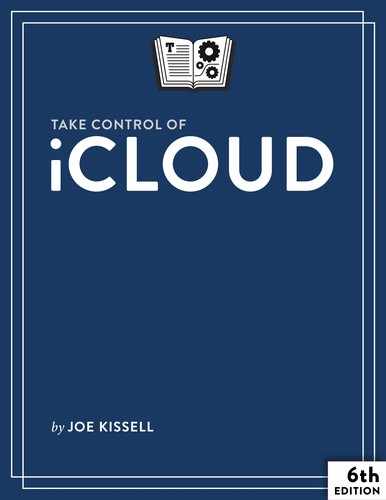Use Back to My Mac
Back to My Mac (BtMM), an iCloud feature exclusively for Mac users, lets you easily connect to one of your Macs—or an AirPort Time Capsule or AirPort Disk—from another Mac located elsewhere on the internet in ways that would otherwise be very difficult to set up.
Once BtMM is active, using it is every bit as simple as (in fact, it’s exactly the same as) connecting between two Macs on the same local network in your home or office—generally just a bit slower.
When I say “connect,” I’m talking about three separate options:
File sharing: You can mount a remote Mac’s drive on your local Mac and then copy files between them, delete or rename remote files, or do anything else you normally could do with a network file server. The same goes for an AirPort Time Capsule or an AirPort Disk.
This is entirely different from using cloud-based storage such as Dropbox or iCloud Drive; Back to My Mac uses iCloud only as a means of locating and connecting to the remote device. Once the connection is made, you can transfer files directly between the local Mac and remote device in either direction. Of course, the remote device must be on and connected to the internet.
Screen sharing: You can see a live view of a remote Mac’s screen on your local Mac, and control the remote Mac with your local keyboard and mouse, as though you were sitting at the remote computer. In this way, for instance, you can run applications on your home Mac that you don’t have with you on your laptop.
Configuration: You can change the settings of an AirPort base station or AirPort Time Capsule in a remote location using AirPort Utility on the Mac.
As cool as Back to My Mac is, it involves considerable behind-the-scenes complexity, and because some of the many variables required for success may be beyond your (or Apple’s) ability to address, you may not be able to get it working in every situation.
On a Mac, activating BtMM is a simple matter of making sure the Back to My Mac switch is on in System Preferences > iCloud. (You must also have File Sharing, Screen Sharing, or both enabled in System Preferences > Sharing; if you don’t, clicking a Details button next to the Back to My Mac switch prompts you to turn them on.) But if you see an error message there, you’re unable to connect to your Mac remotely, or you want to set up an AirPort Time Capsule or AirPort Disk to use BtMM, you may need additional help. Fortunately, Apple has a couple of useful support articles:
Once everything’s set up, go on a field trip. Take your laptop somewhere else. Make sure you’re connected to the internet. If you look in the sidebar of a Finder window, you should see the icon for your remote Mac, AirPort Time Capsule, or AirPort Disk under Shared, just as you would if it were on the same local network. You can now connect to it as follows:
Share another Mac’s screen: To control your remote Mac’s screen, select its icon in the sidebar, click Share Screen, and enter your Mac account’s login credentials if prompted to do so.
Access remote files: To access files on a remote Mac, AirPort Time Capsule, or AirPort Disk, select its icon in the Finder window sidebar, click Connect As, and enter your credentials if prompted. A list of shares—volumes and shared folders—on your remote device appears. Double-click any share to mount it and display its files.
Configure a remote base station: Should the need arise, you can also configure your AirPort Time Capsule or AirPort Extreme base station remotely using Back to My Mac, assuming you’ve previously enabled Back to My Mac on the device. Simply open AirPort Utility and your remote device should appear, along with any compatible devices found nearby.
